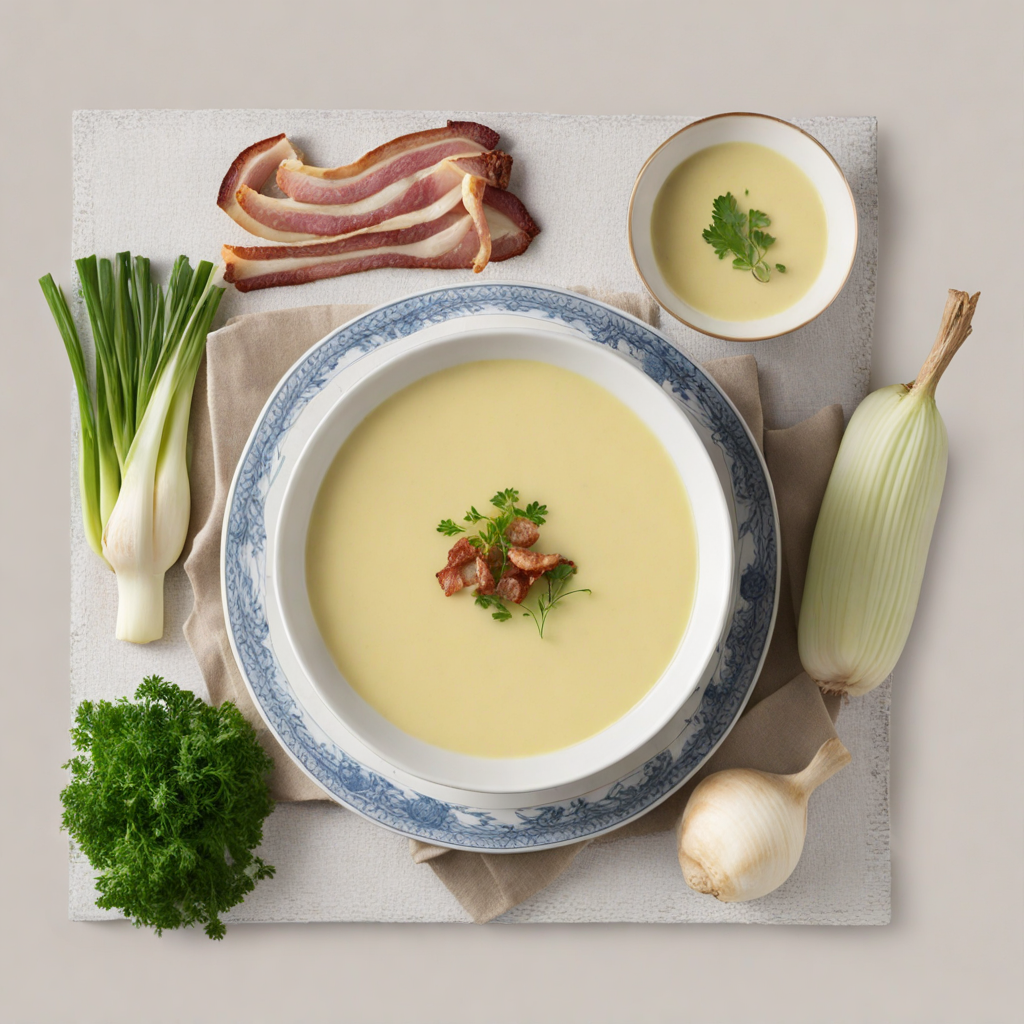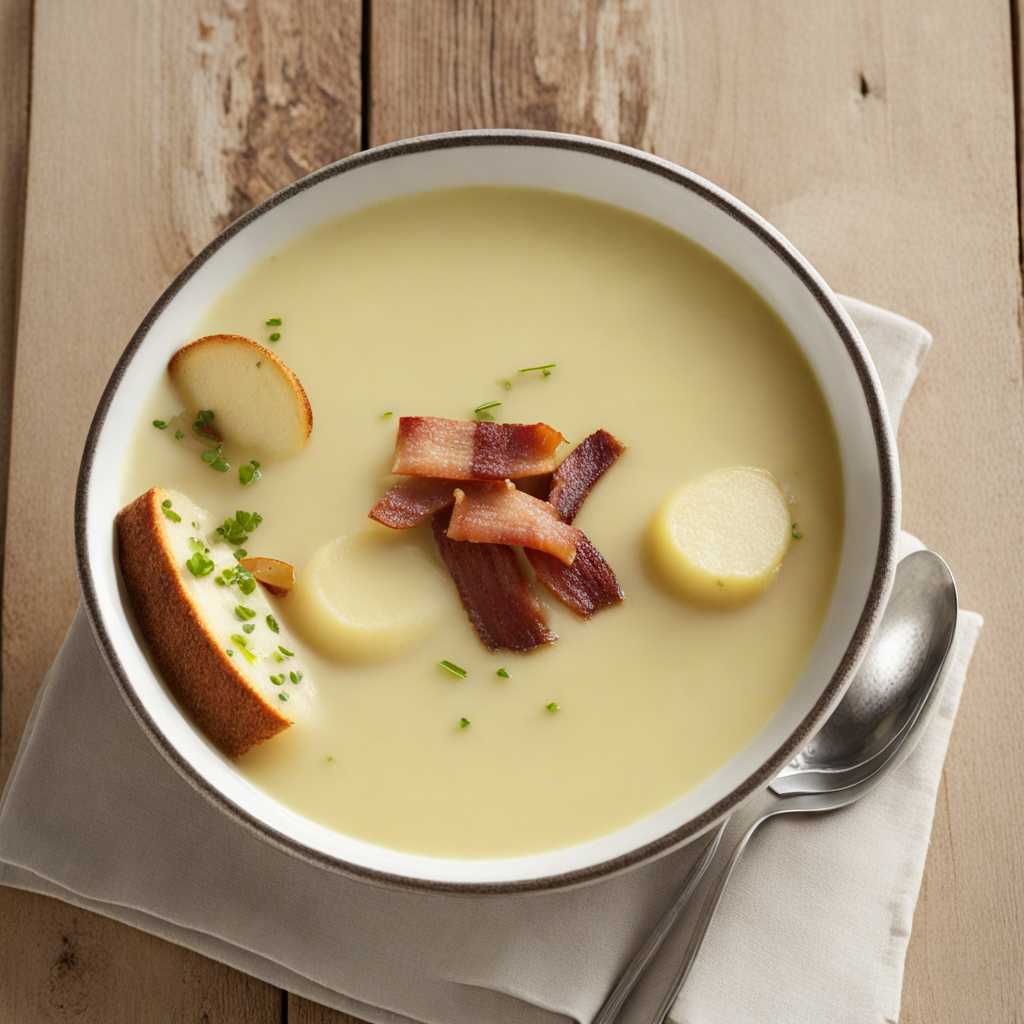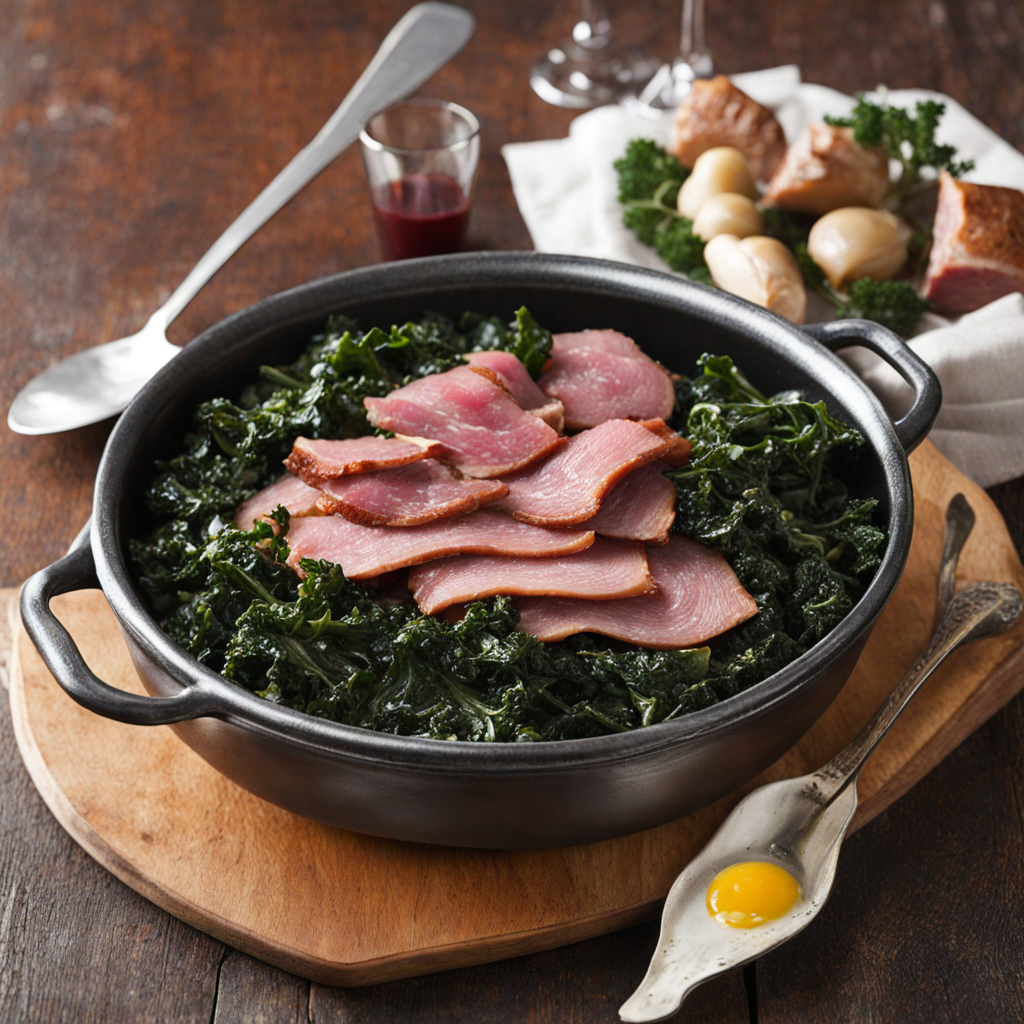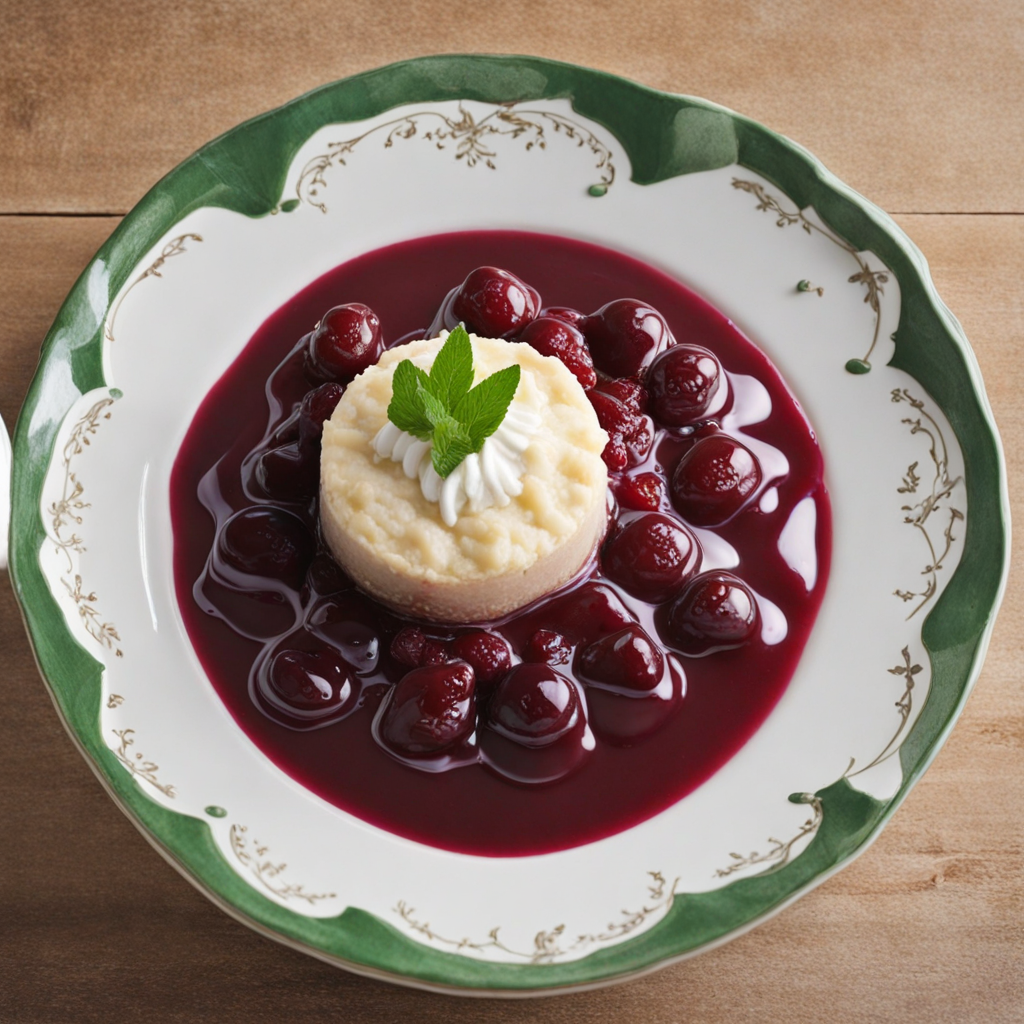Kartoffelsuppe
Kartoffelsuppe, or Danish potato soup, is a comforting dish that beautifully showcases the humble potato, a staple in Danish cuisine. Characterized by its creamy texture and hearty flavor, this soup is typically made with a base of sautéed onions and garlic, which are gently cooked to release their sweetness before being combined with tender, diced potatoes. The potatoes are simmered in a rich vegetable or chicken broth until they are soft and creamy, creating a delightful balance of flavors that warms the soul. What sets Kartoffelsuppe apart is its versatility; it can be enhanced with various ingredients to suit individual tastes. Many recipes incorporate fresh herbs like dill or parsley, adding a touch of brightness and earthiness to the overall flavor profile. Some variations include a splash of cream for added richness or crispy bacon bits sprinkled on top for a savory crunch. The soup is often served with a side of crusty bread or rye, making it a satisfying meal on its own. The experience of tasting Kartoffelsuppe is one of simple pleasure. As you take your first spoonful, the warm, velvety texture envelops your palate, while the comforting flavors evoke a sense of home and nostalgia. This classic dish not only nourishes the body but also invites you to savor the essence of Danish culinary tradition, making it a perfect choice for anyone looking to explore new and wholesome flavors.
How It Became This Dish
Kartoffelsuppe: A Culinary Journey Through Denmark #### Origins and Historical Context Kartoffelsuppe, or potato soup, has its roots deeply embedded in the agrarian history of Denmark. Potatoes were introduced to Denmark in the late 18th century, brought back from South America by sailors and traders. Initially met with skepticism, the humble tuber gradually became a staple in the Danish diet, particularly as the country faced food shortages and economic struggles in the 19th century. The adoption of potatoes into the local cuisine was not merely a matter of taste; it was a necessity for survival. By the 19th century, Kartoffelsuppe began to emerge as a popular dish, symbolizing the ingenuity of Danish cooks who transformed simple, readily available ingredients into nourishing meals. The soup typically features potatoes as its main ingredient, often accompanied by other vegetables, herbs, and sometimes meat or sausage, reflecting the frugality and resourcefulness of Danish households. #### Cultural Significance Kartoffelsuppe is more than just a dish; it embodies the spirit of Danish domesticity and community. Traditionally, it was a meal that could feed a family with minimal expense, making it a beloved dish among the working class. This soup became a comfort food, associated with warmth and togetherness, often served on cold winter nights when families gathered around the hearth. In Danish tradition, food has always played a crucial role in family gatherings and celebrations. Kartoffelsuppe became a staple for various occasions, from everyday meals to festive gatherings. It is often served during the colder months, aligning with the Danish concept of "hygge," which emphasizes coziness, comfort, and togetherness. The act of preparing and sharing Kartoffelsuppe fosters a sense of community and familial bonds. #### Ingredients and Variations The beauty of Kartoffelsuppe lies in its versatility. The basic recipe typically includes potatoes, onions, and broth, but regional variations and personal preferences have led to numerous adaptations. In some areas, carrots, leeks, or celery are added, enhancing both flavor and nutrition. Smoked sausage or bacon might be included for a richer taste, reflecting the Danish love for cured meats. A traditional method of preparation involves sautéing the onions in butter before adding diced potatoes and covering them with broth. The mixture is then simmered until the potatoes are tender, and the soup can be puréed for a creamy texture or left chunky for a more rustic feel. Cream, milk, or even a dollop of sour cream can be added for richness, while fresh herbs like dill or parsley offer a burst of color and flavor. Over time, Kartoffelsuppe has also adapted to modern tastes and dietary preferences. Vegetarian versions have become popular, using vegetable stock and omitting meat altogether. Gluten-free variations can easily be made, as the dish naturally lacks gluten-containing ingredients. #### Kartoffelsuppe in the 20th Century The 20th century brought significant changes to Danish society, and with it, the culinary landscape. After World War II, Denmark experienced economic growth, leading to greater availability of a variety of ingredients. However, Kartoffelsuppe maintained its place in Danish cuisine due to its simplicity and nostalgia. In contemporary times, Kartoffelsuppe has found its way into restaurants and cafes, where chefs often elevate the dish by using gourmet ingredients and innovative techniques. This shift illustrates how traditional recipes can evolve while still honoring their roots. Chefs may incorporate local, seasonal produce or unique spices to reinvigorate the classic soup, appealing to both locals and tourists alike. #### Kartoffelsuppe in Modern Danish Cuisine Today, Kartoffelsuppe is often featured in cookbooks and cooking shows, highlighting its significance in Denmark's culinary heritage. It is a dish that resonates with both the older generation, who grew up with it as a comfort food, and younger generations, who appreciate its simplicity and adaptability. In the realm of food tourism, Kartoffelsuppe has become a symbol of Danish gastronomy, representing the country’s commitment to utilizing local ingredients and traditional cooking methods. Many Danish food festivals celebrate this beloved soup along with other traditional dishes, showcasing the nation's culinary legacy to a global audience. #### Conclusion Kartoffelsuppe is more than just a simple potato soup; it is a reflection of Denmark's agricultural history, cultural values, and evolving culinary landscape. From its humble beginnings as a peasant dish to a staple in modern Danish cuisine, it has remained a beloved comfort food that brings families and friends together. As the world continues to change, Kartoffelsuppe serves as a reminder of the importance of tradition in our culinary practices. It speaks to the heart of Danish culture, celebrating simplicity, resourcefulness, and the joy of sharing a meal. Whether enjoyed in a cozy home or a trendy café, Kartoffelsuppe remains a testament to Denmark's rich food heritage, continuing to warm the hearts and stomachs of those who partake in its delightful flavors.
You may like
Discover local flavors from Denmark







